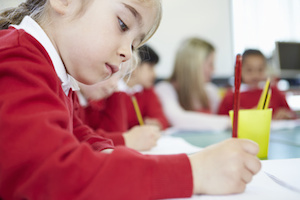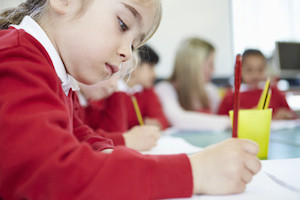At a recent parent/teacher interview, my son’s teacher said that while he was doing extremely well in most areas, his writing was below National Standards at the last test. It wasn’t for a lack of ideas or aptitude, she felt, rather a lack of concentration. Writing didn’t interest him as much as the other subject, so he tend to switch off. Whatever the reason, his marks weren’t ideal.
While it’s not what you want to hear as a parent, it’s wonderful that there is an opportunity in the first part of the year to address any issues, before they impact on the next year’s learning.
The teacher and I nutted out a plan, which involved extra writing at home, setting goals for him to achieve every day and using classroom tools to keep him focused. We also let him write about any subject that interested him.
Like all change, it took a bit of enthusiastic encouragement to get him engaged, but six weeks later, he was retested and had come up well into the National Standards and above.
More than one million adults in New Zealand experience literacy difficulties in their everyday lives, and anecdotal evidence from new entrant teachers indicates that children are arriving at school with fewer words in their vocabularies than even a decade ago.
A report in October last year highlighted concerns from government-funded literacy resource teachers, who are dealing with double the number of students as they were 13 years ago, and said some schools have waiting lists of students struggling with reading and writing.
The very first ‘Get NZ Writing’ initiative aims to combat the trend by emphasising the importance of writing to develop language skills and retain information.
International research has proven that when students practice printing by hand, they learn how to read and write more quickly and more accurately.
Created by Warehouse Stationery, the initiative will see free handwriting kits sent to every primary school in the country to encourage pupils to practice their writing skills and take part in a competition to find New Zealand’s best handwriter.
Three children will be chosen from their age groups as the best handwriters in the letter-writing competition, which will be judged by Kiwi children’s book author Gavin Bishop and well-known theatre writer and actor Miranda Harcourt ONZM.
Bishop, who has written and illustrated 60 children’s picture books and is an Officer of the New Zealand Order of Merit, says the importance of writing and reading cannot be underestimated.
“Reading and writing is the basis of all learning, and there is something very special about being able to compose a handwritten letter that I think helps children and adults really understand the words and concepts they are using,” says Bishop.
“Handwriting has always been important to me. I learned to write with a dip pen at primary school and then when I attended Art School at Canterbury University it was compulsory to learn Italic handwriting. I wasn’t very keen on it at the time, but now I am most grateful to have that skill, and it is an asset to be able to hand write a letter on an occasion when a typed or emailed letter will not do.”
Harcourt, a mother of three, says she feels passionate about the written word and has published the literacy and numeracy works Miranda’s Alphabet and Miranda’s Numbers.
“I am a great fan of handwritten letters and cards. Our kids’ grandparents love to get family news and views written by their grandchildren. And it makes total sense that the research tells us kids learn better if they write information down.
“I am an actor and we often write out our lines again and again as a way of knowing the text more deeply. One of my favourite things is to illustrate letters, ‘illuminated text’ they call it. I call it doodling, but whatever the name, putting pen to paper packs an emotional punch for both the writer and the receiver.”
Warehouse Stationery CEO Pejman Okhovat says the new campaign is designed to capture the feel-good factor of writing, which some children may not have a strong connection with due to the increasing use of emails and text messaging to communicate.










Karen Ronald - 9 years ago
Great article, great initiative. I’m also passionate about getting kids to love reading and writing. I have a little mummy business that aims to do this, check out my website https://www.raisingakiwiprincess.com/collections/snail-mail-stories-nz-subscriptions